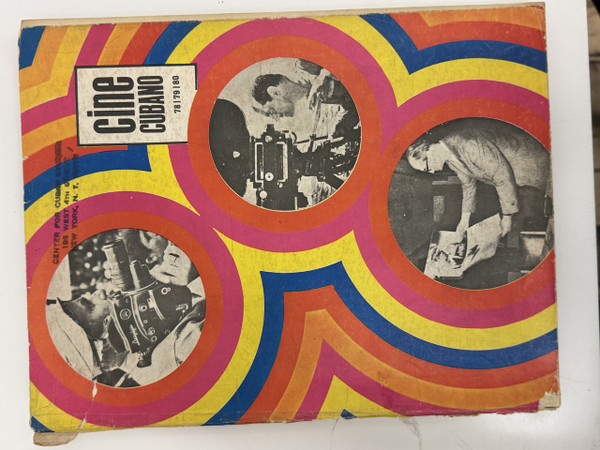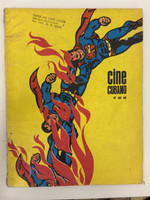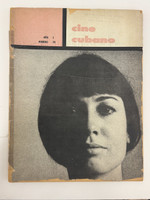- Travel
-
Exhibits
- La Portada Cubana
- Immortal Cuba: Artists Take on Their Heroes
- Seattle Poster Exhibit
- Sandra Dooley & Alejandrina Cué
- The Art of Wayacón
- Cuban Folk Art
- Cuba In Black And White
- 25 Years of Cuban Art Space
- Summer Folk Art Expo
- ¡SPRING AWAKENING FROM CUBA!
- Celebrating The Art Of Cuban Women
- Celebrating Paper, Affordable Art from Cuba
- Art of the Revolution
- Outsider Art
- Lost and Found
- En la lucha: Celebrating Cuban Women and Their Art
- Cuban Art Stash
- 100 Fires: 5 Cienfuegos Artists' Work on Paper
- Waya + Monte! Magic Realism in Cienfuegos
- Viva Cuba Viva! Poster Show
- Cultivando Sueños
- Black Lives Matter in Cuba Jan 9-March 27
- Leandro Soto: Crónicas visuales
- Cuban Canvas
-
Archive
- Global Reflection 2018: Spirit and Community
- Exhibit in the cloud: Contemporary Works on Paper
- MADE IN CUBA! MINNEAPOLIS EXHIBIT
- Cuban Posters and Photography from CCS collection
- AUTUMN SALE! Sept/Oct 2017
- SPRING ARTS AND CRAFT SALE
- Vuelo Directo/Non Stop: Alberto & Alejandro Lescay
- The Many Faces of Fidel
- Somos
- Made in Cuba!
- The US empire in Cuban graphics
- Made in Cuba/Seattle exhibit
- Entre Nos
- Looking Back
- Cuban Art Space
- Membership/Donate
- About Us
- Cuba News
-
The cover of "Cine Cubano" issues 78/79/80 features Reboiro's exuberant psychedelic design with swirling concentric circles in vibrant yellows, oranges, pinks, and blues, containing three circular photographic vignettes of filmmakers at work with cameras and editing equipment. The kaleidoscopic design evokes both the revolutionary energy of international solidarity filmmaking and the technical complexity of cinema production, while the embedded photographs document the collaborative nature of Cuban filmmakers' international missions. Holbein's layout maintains the magazine's sophisticated typographic standards while allowing the explosive color scheme to celebrate the heroic work of Cuban cinematographers documenting international liberation struggles.
This triple issue centers on "VIET NAM: informes de TRABAJO" (Vietnam: Work Reports), providing comprehensive documentation of Cuban filmmakers' solidarity mission to Vietnam during the final phases of the Vietnam War. The work reports detail how Cuban cinema teams traveled to Southeast Asia to document the Vietnamese people's resistance against American aggression, creating both educational materials for Cuban audiences and international propaganda supporting anti-imperialist struggles. The extensive coverage includes technical discussions of filming under wartime conditions, ideological analysis of documentary approaches to revolutionary warfare, and practical accounts of international filmmaking collaboration during active combat.
Published by the Instituto Cubano del Arte e Industria Cinematográficos under Alfredo Guevara's continued leadership, this comprehensive issue features contributions from prominent directors including Fernando Pérez, Pastor Vega, J. Grigorias, José Antonio González, Arqueles Morales, and Santiago Alvarez. The documentation covers various aspects of the Vietnam mission, from "Karlovy Vary: muestra de cine cubano" to analysis of films like "Matalia Kondrachuk," "El mundo de nieve," and discussions of contemporary Cuban cinema's role in international solidarity. The editorial offices at Calle 23 no. 1155, Habana, Cuba, maintained accessibility through standard subscription rates (0.25 pesos per issue in Cuba, 2.75 annual in Cuba, 5.00 international) while documenting this crucial period when Cuban revolutionary cinema extended its reach to support liberation movements worldwide, demonstrating the practical application of internationalist filmmaking during the height of Third World solidarity movements.
-
-
Discover More at the Center for Cuban Studies





![Instituto Cubano del Arte e Industria Cinematográficos / ICAIC (director: Alfredo Guevara), "Cine Cubano" issue 48 - "Cine del Tercer Mundo," [1970s]. Offset print, magazine.](https://cdn10.bigcommerce.com/s-ufzvo/products/5901/images/6486/IMG_8812__28936.1761537538.200.200.jpg?c=2)
![Instituto Cubano del Arte e Industria Cinematográficos / ICAIC (layout: Holbein, cover designer: Reboiro (Antonio Fernández Reboiro), director: Alfredo Guevara), "Cine Cubano" issues 76/77, [1976-1977]. Offset print, magazine.](https://cdn10.bigcommerce.com/s-ufzvo/products/5903/images/6490/IMG_8817__13591.1761537538.200.200.jpg?c=2)
![Instituto Cubano del Arte e Industria Cinematográficos / ICAIC (layout: Holbein, cover design: Tony Fernández Reboiro, director: Alfredo Guevara), "Cine Cubano" issues 54-55, [1969]. Offset print, magazine.](https://cdn10.bigcommerce.com/s-ufzvo/products/5905/images/6493/IMG_8821__07256.1761600194.200.200.jpg?c=2)